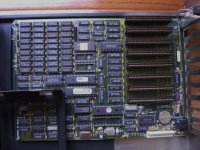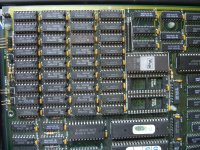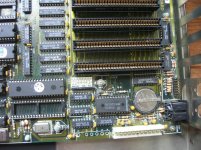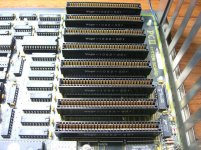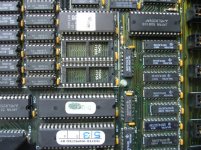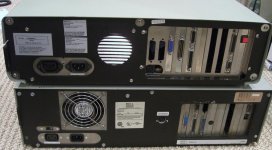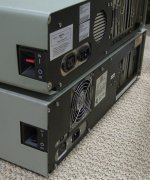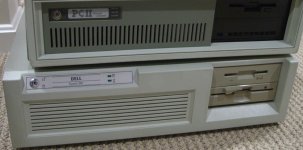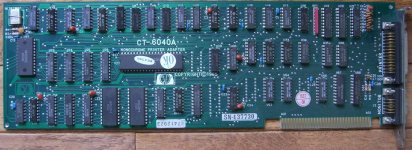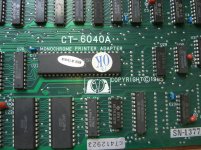The University of Cape Town began to take an interest in CBE in the middle of the 1980's. By that time, two universities had acquired large mainframe systems capable of delivering the PLATO system, but a decision was made not to follow this route. The growing interest in PC-based microcomputing and the networking of such machines eventually led to the University making funds available for the establishment of a network of PC's in the Biochemistry department, which was to act as a testing ground for the viability of instructional computing in this type of environment.
The choice of hardware:
This was initially based on two considerations that were thought to be the most important: namely that it should be possible to store all courseware and records centrally (as opposed to having multiple floppy discs) and that the system should have graphics ability to display chemical formulae at an acceptable quality. Indeed, the project was delayed until the achievement of these goals became feasible within the permitted price range.
The hardware solution finally selected was a network of 8088 based MS-DOS compatible computers (Wugo PCII AD) connected to an 80286 based file server (IBM PC AT) using Gateway G-Net. Each station was equipped with a CGA graphics card an screen, which at the time represented a compromise between the more expensive EGA and the cheaper monochrome Hercules standards. In fact, most of our courseware was initially developped for the 320x200 pixel four colour display mode, this not only meets the criterion of acceptability but has the advantage that it is supported by almost all commercially available software and courseware.
Although computing power was not initially considered an important criterion, experience has shown that applications will inevitably be designed which will fully exploit all machine capabilities. For example, creating displays using vector drawing routines (as opposed to displaying images that have been stored as copies of display memory) is unacceptably slow unless an 8087 coprocessor is used.
The system software chosen for the network was Novell Advanced Netware (SFT level 1). This is an extremely good and widely used product which offers high performance, reliability and flexibility.

